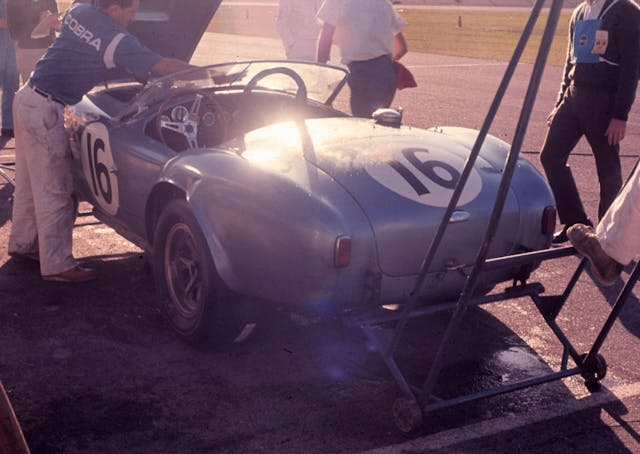Racing Improves the … Astronaut
Imagine being at NASA at the beginning of the space race. Every day was a new challenge for everyone involved, from the astronauts themselves to the engineers tasked with building the spacecraft. There was no significant body of research upon which scientists could draw, and nobody really knew what the human body could endure in an environment as unknown and unforgiving as outer space. So engineers and physicians had to improvise by turning to other activities that tested the limits of human physical capacity, and by monitoring the athletes involved through the use of data-gathering sensors. Curiously, that led NASA’s researchers to Daytona.
Now, sports cars have been racing around the clock at Daytona early each year since 1966, but even in the years before, endurance racing had been a staple at the track. In 1964, Daytona hosted the Continental, a 2000-km race well remembered for the debut of Carroll Shelby’s wild Cobra Daytona coupe. It was there that the space race and race drivers converged.
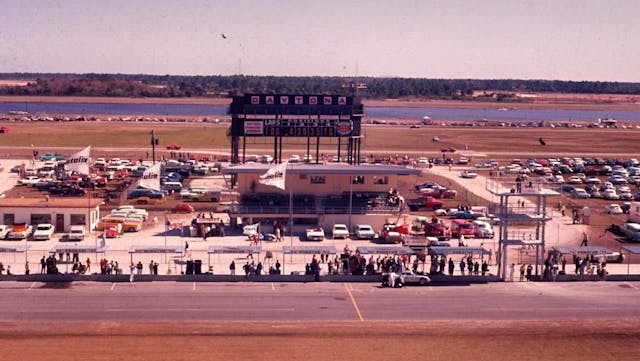
Not far south from Daytona lies a spit of land jutting into the sea known today as Cape Canaveral, home of the Kennedy Space Center. Although President Kennedy met his end in Dallas a few months prior to the 1964 Daytona Continental, his promise to put Americans on the moon by the end of the decade held fast. America’s moonshot, as it became known, remains to this day one of the most remarkable examples of focus and collaboration between industry, government, the military, and research institutions both public and private.
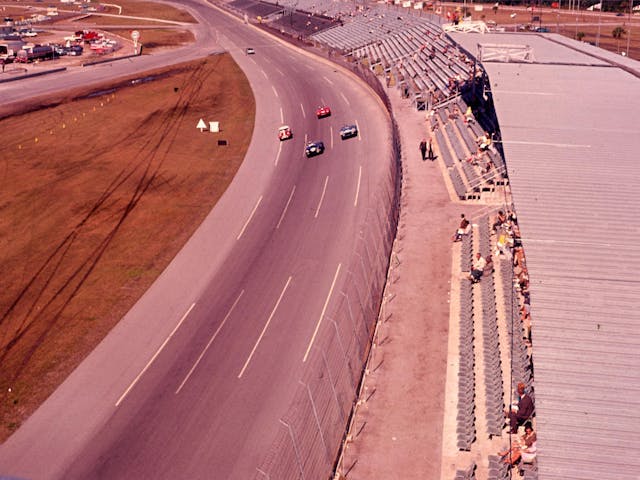
But Daytona and the space program are forever linked by more than just their geographical proximity. It started with a Houston amateur road racer named Vincent Collins. In his day job, Collins was a radiologist at the Baylor College of Medicine. Houston, of course, is the home of NASA’s Johnson Space Center, and in 1961, NASA and Baylor joined forces to found the National Space Biomedical Research Institute. Now known as the Center for Space Medicine at Baylor College of Medicine, the institute continues to research what happens to human bodies as they venture far beyond the constraints of Earth.
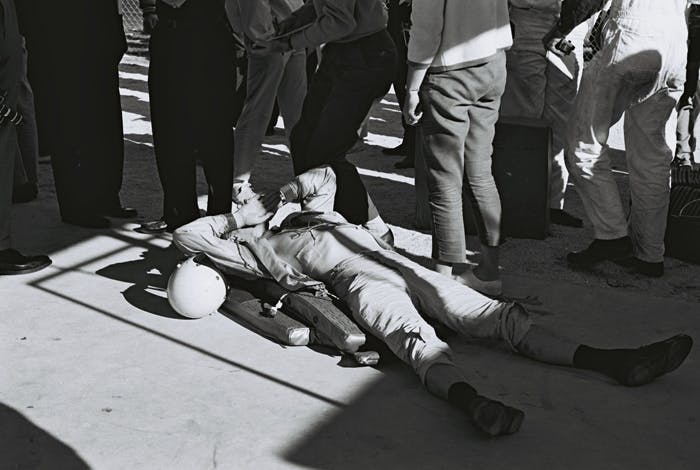
In the November 1964 issue of Car and Driver, Collins noted: “Our objective is to evaluate the changes in basic body physiology in race car drivers, prior to the start, while in action, and immediately afterwards. There is already evidence of great adaptability of the human body under strain of this type, but naturally the symptoms vary from driver to driver and race to race.”

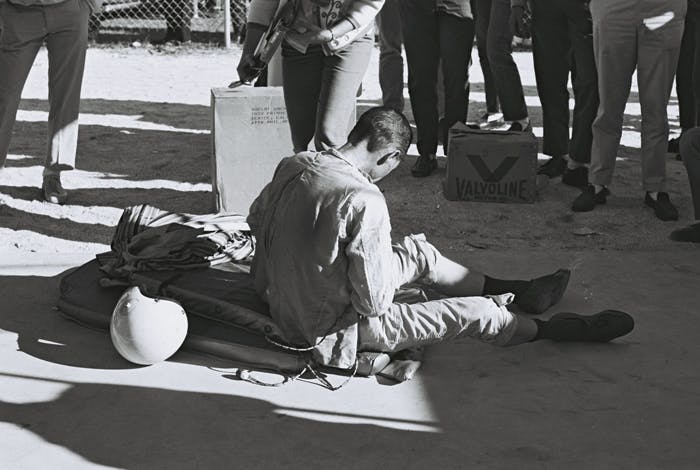
The idea stemmed from a NASA biologist in Houston, Rita Rapp, who figured that racers typically see similar or even greater stresses than would astronauts in orbit, and that they’d prove to be ideal guinea pigs. So they turned to yet another Texas institution, Carroll Shelby, who would be running a number of Cobras at Daytona, including the Cobra Daytona coupe.
In a 1966 NASA contractor report, “Physiologic Observations on Race Car Drivers,” Collins generically listed eight drivers who had taken part in the 1964 Daytona Continental, along with their medical data before, during, and after the race. Of course, the privacy regulations of HIPAA weren’t around in the ’60s, but the data was anonymized enough to stymie anyone trying to suss out the racers involved. Through contemporary reports and photographs, however, it’s clear that much of the factory Cobra racing team was wired for data collection during the race.
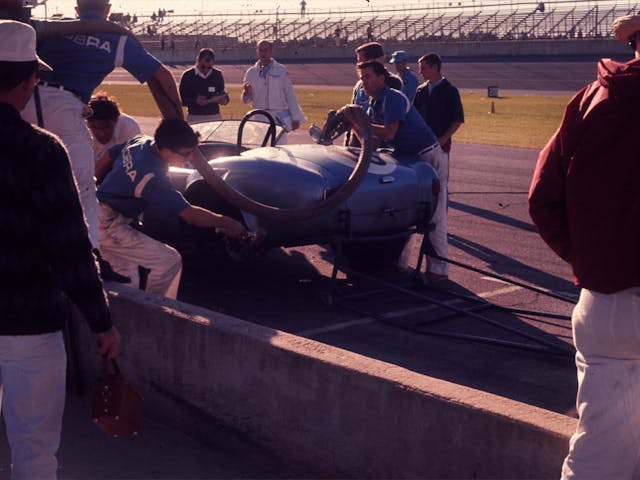
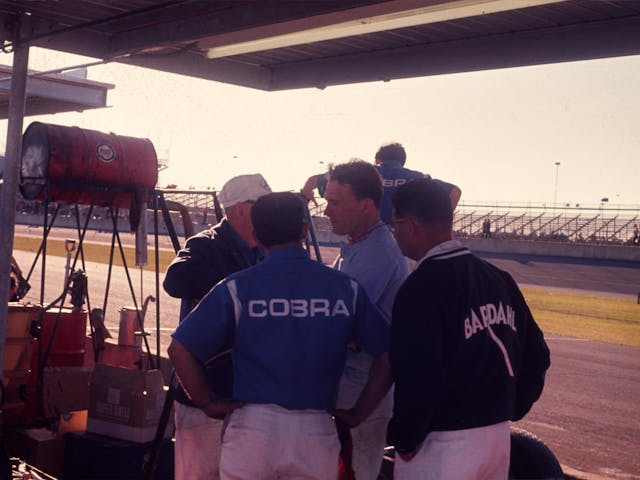
This includes Dave MacDonald and Bob Holbert in the leading Daytona Coupe, which dramatically caught fire in the pits while leading. Others included Dan Gurney, Bob Johnson, Jean Guichet, and Jo Schlesser; the C/D article notes that Schlesser was scolded after a mid-race wreck by a nurse in the infield hospital, who warned him that he’d break the thermometer in his mouth if he continued to chat with his compatriot.
This was 60-plus years ago, recall, so it’s worth noting that computing was in its relative infancy. The phone in your pocket today is thousands of times more powerful than the devices used to send Apollo 11 to the moon. The smartwatch on your wrist knows more about your day-to-day health than could be imagined decades ago.
Remarkably, though, some of the Cobras were fitted with radio transmitters to relay driver data wirelessly during the race to tape recorders in the pits. Anyone who watched the blockbuster Ford v Ferrari recalls Christian Bale as Ken Miles ripping the telemetry computers out of the GT40 during testing. To imagine Miles assenting to these devices during a race is a bit boggling.
Sensors were taped to the drivers to monitor heart rate, EKG, respiration rates, and core temperatures. It didn’t just happen at Daytona, either, as the 1966 report shows other instances, including lower-stress SCCA events where Dr. Collins wired himself as he raced. A 1964 internal newsletter from the Johnson Space Center (then called the Manned Spacecraft Center) notes that racers actually performed under higher stress than even astronauts during re-entry.
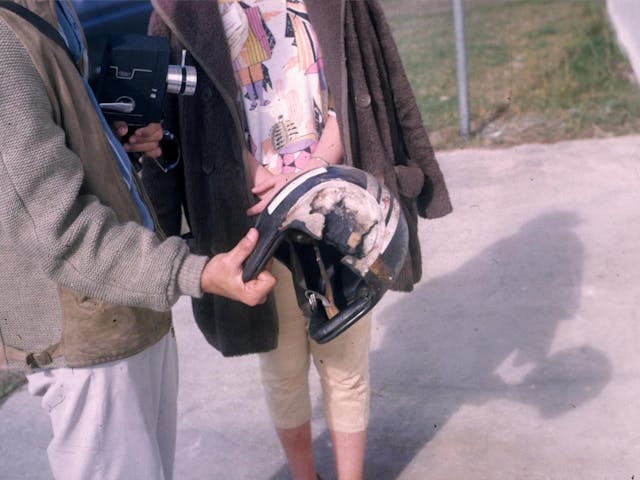
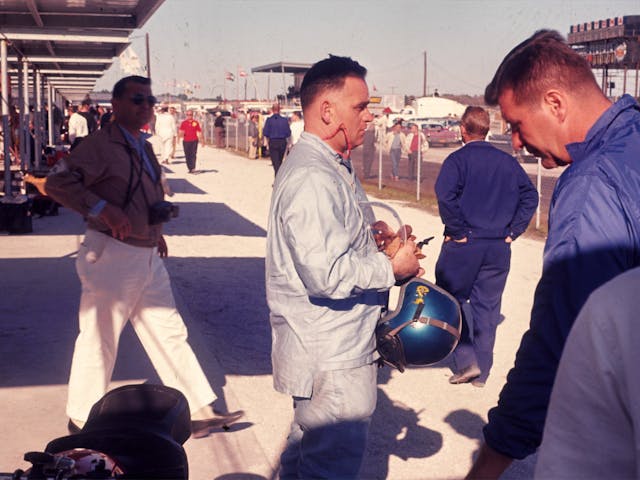
Sadly, it seems that none of the drivers involved with the combined Shelby/Baylor/NASA effort remain with us. I did chat with Peter Brock, the designer of the Cobra Daytona Coupe, who tells me that he wasn’t even at his baby’s first race. “I did not attend that first race at Daytona, as we didn’t have the money for a ’non-active crew’, but I do remember some commentary about drivers being instrumented for stress.”
But in reading the NASA contractor report, it seems clear that the data gathered went a long way to establishing that which a human body can endure. It was merely five years after this race that the Apollo 11 flight landed on the lunar surface and fulfilled Kennedy’s promise. Indeed, these Cobra racers took us all to the moon.

***
Check out the Hagerty Media homepage so you don’t miss a single story, or better yet, bookmark it. To get our best stories delivered right to your inbox, subscribe to our newsletters.
